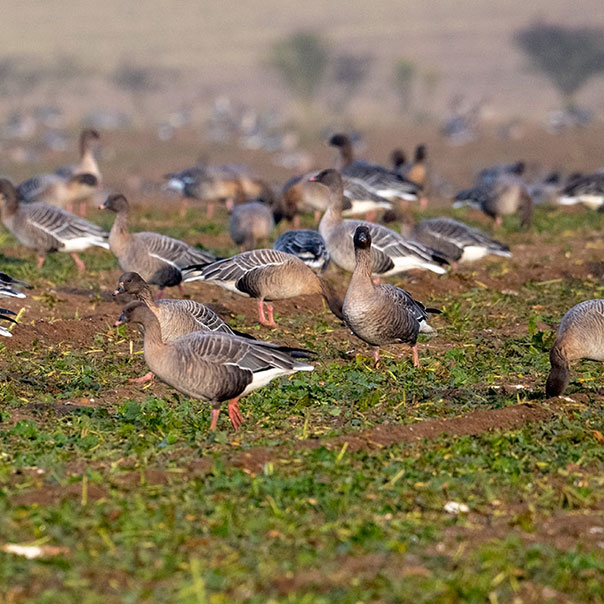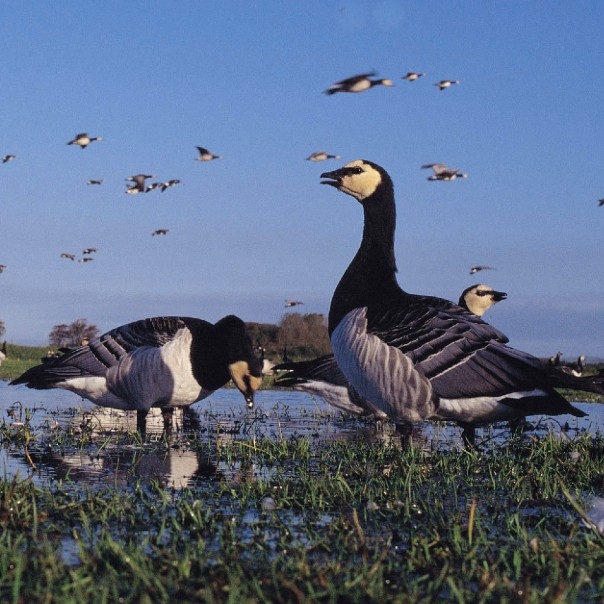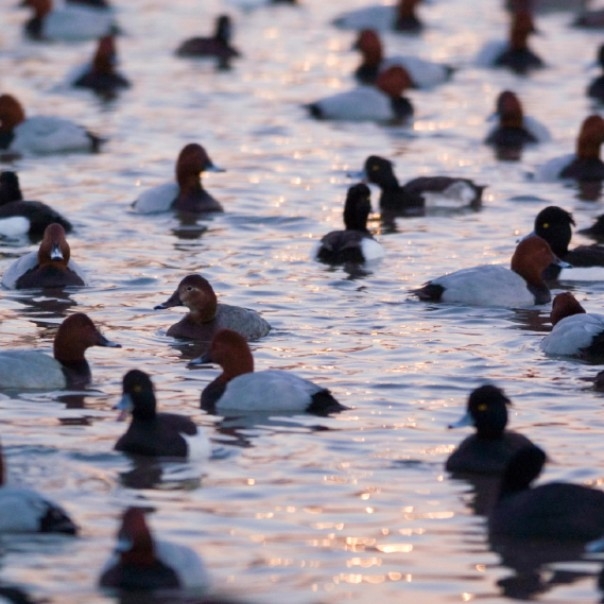Swans found in UK wetlands
Swans are perhaps our most widely-recognised waterbird; no surprise with their large size and pure-white plumage. Three different species are native to the UK; find out more about the swans that call our wetlands home.
Mute swan (Cygnus olor)
Our most familiar and largest swan, their wingspan stretching to almost 2.5 metres. They’re the only one of our swan species to have an orange bill and can be found on a wide-range of water bodies, from a village pond to our largest lakes and are with us year-round. In spring, you might see them nesting on top of a large mound of reeds. Despite their name, they can be heard emitting various honks and snorts, as well as in flight their wings produce a high-pitched throbbing sound, unique to this species.
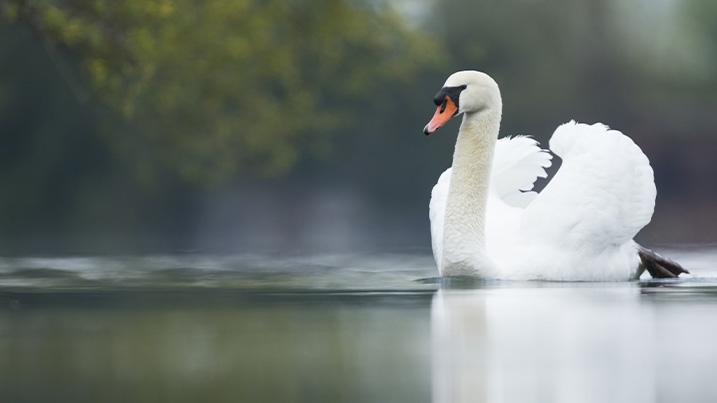
Whooper swan (Cygnus cygnus)
Similar in size to the mute swan but with a large, wedge-shaped, mostly yellow bill, they migrate to us for the winter across the ocean from their Icelandic breeding grounds. Often seen feeding on agricultural land as well as open water, numbers have risen sharply in recent years with over 10,000 now being seen on the Ouse Washes alone. They’re a loud species and can often be heard ‘bugling’ when feeding and in flight.
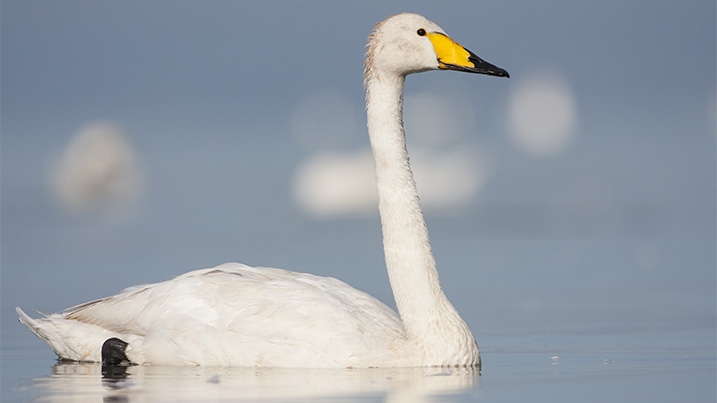
Bewick’s swan (Cygnus columbianus bewickii)
Bewick’s swans are smaller than whoopers, with less yellow on their bill, not reaching the nostril as in whooper. They breed around the coasts of the Arctic Ocean in northern Russia, with small numbers coming to the UK to spend the winter. It’s thought that with a warming climate, many stop short on migration, no longer needing to use up precious energy crossing from the continent. Their calls are similar to those of whoopers, but are shorter and usually just two sounds together.
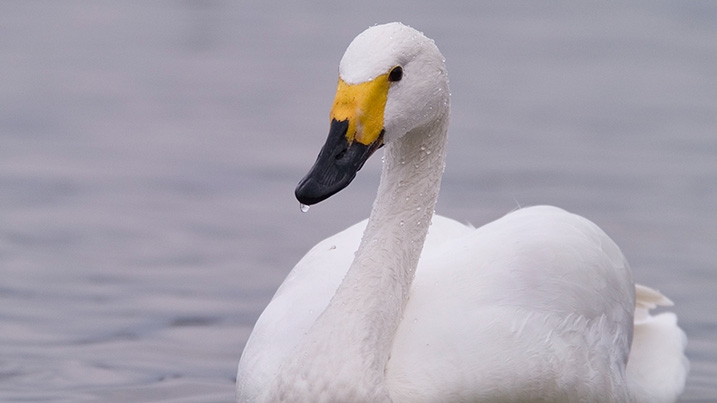
My swan doesn't look like any of the above...
It’s likely to be a juvenile bird; in their first winter, it can take until February for the young to start to show the white of their adult plumage. Mute swan juveniles might be independent by this time but whooper and Bewick’s swans usually remain with their parents on spring migration.
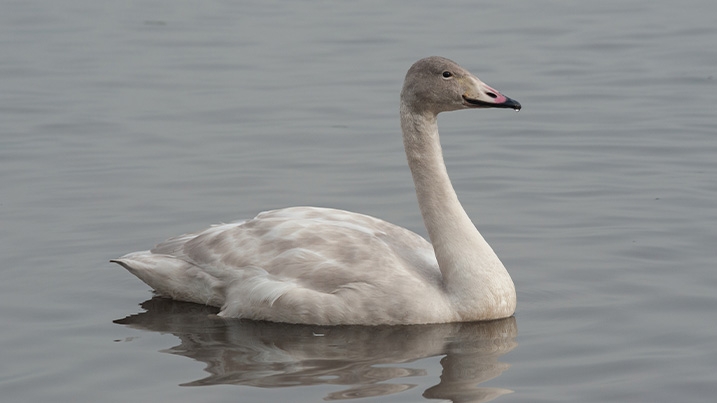
Alternatively, you might see a black swan (Cygnus atratus). Native to Australia, individuals seen in the UK will most likely have originated in captive collections. There are introduced breeding populations in The Netherlands that may perhaps visit us from across the channel.
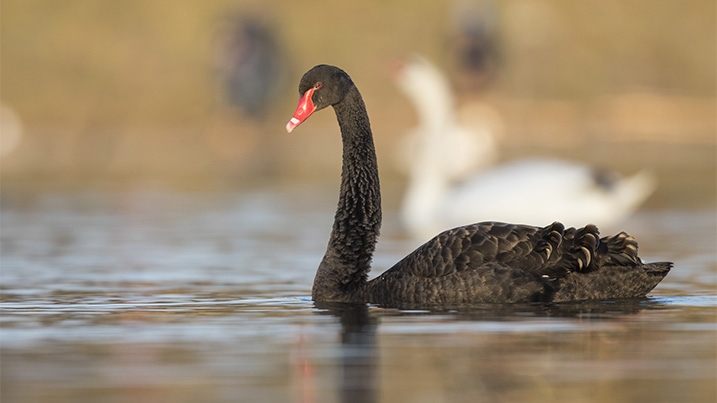
Threats to these species and how WWT are helping
Today, the threats to swans varies between species. Certainly the most threatened is the Bewick’s swan, with illegal hunting and climate change key. WWT has a long history of monitoring Bewick’s swans in order to piece together the reasons for their decline.
The Icelandic whooper swan population on the other hand is a modern-day success story, with over 12,000 now spending the winter on the Ouse Washes. However these birds are still at risk from collisions with power lines and poisoning from lead shot, as are mute swans.
Habitat is of course key for all of these species to thrive, which is why we're working to restore wetlands on a national scale and you can help with our campaign for 100,000 hectares of new wetlands.
If you're keen to spot some swans, our wetlands sites are a great place to start.
Find your nearest WWT site